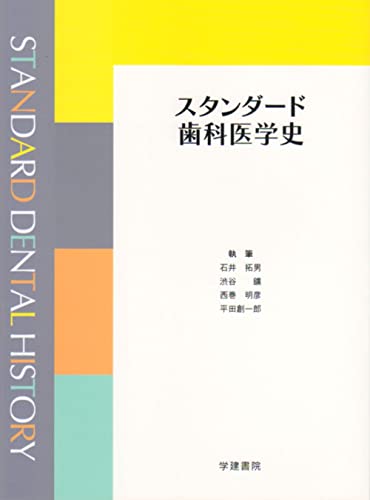13 0 0 0 OA 医療用医薬品添付文書情報が判断材料とされた医療訴訟について
- 著者
- 加來 洋子 枝並 宏治 福本 雅文 山口 雅巳 渋谷 鉱
- 出版者
- JAPANESE SOCIETY OF ORAL THERAPEUTICS AND PHARMACOLOGY
- 雑誌
- 歯科薬物療法 (ISSN:02881012)
- 巻号頁・発行日
- vol.27, no.2, pp.116-124, 2008-08-01 (Released:2010-06-08)
- 参考文献数
- 27
We conducted a study of judicial decisions on medical accidents covered between 1994 and 2000 by the Japanese press and Hanrei Times, a Japanese magazine specializing in judicial precedents, to obtain information on drug package inserts, and the extent to which these inserts are used as criteria for the judicial decisions.During the period studied, judicial decisions were issued regarding 514 cases of medical accidents, and a total of 1, 238 articles covering the decisions were published in the media referred to above. Looking at the changes in the number of cases by year, there were between 51 and 81 cases yearly from 1994 through 1999, while this number significantly increased in 2000, to 121.Out of the 514 cases, 34 (6.6%) were associated with drugs; drug package inserts were used as criteria for the decisions in four of the 34 cases, and 19 articles covering these four cases were carried in the media. Meanwhile, in 374 of the 514 cases (72.8%), it was judged that medical care personnel were to blame for the accidents, and these cases were covered in 1, 010 of the 1, 238 articles (81.6%) in the media.Common cases of malpractice pointed out to doctors and other medical personnel included violation of due care in terms of drug package inserts. Furthermore, a link between medical practice and the level of medical care was also indicated, as well as a link between package inserts and the level of medical care. The level of medical care varies due both to differences in medical services and the individual circumstances surrounding medical care providers, and negligence in collecting the latest information for medical findings is also included among the various types of malpractice.Other cases of malpractice included violations of accountability, in which medical care personnel neglected to inform patients of items mentioned in drug package inserts.Doctors, dentists, and other medical personnel must fully understand the descriptious given in drug package inserts.
- 著者
- 渋谷 鉱 村木 春長 谷津 三雄
- 出版者
- 日本歯科医史学会
- 雑誌
- 日本歯科医史学会会誌 (ISSN:02872919)
- 巻号頁・発行日
- vol.13, no.2, pp.119-120, 1986-12-10
- 被引用文献数
- 1
- 著者
- 渋谷 鉱 村木 春長 谷津 三雄
- 出版者
- 日本歯科医史学会
- 雑誌
- 日本歯科医史学会会誌 (ISSN:02872919)
- 巻号頁・発行日
- vol.13, no.1, pp.17-18, 1986-09-10
2 0 0 0 雑誌「顕微鏡」にみられる歯科の記載
- 著者
- 米長 悦也 渋谷 鉱 石橋 肇 谷津 三雄
- 出版者
- 日本歯科医史学会
- 雑誌
- 日本歯科医史学会会誌 (ISSN:02872919)
- 巻号頁・発行日
- vol.14, no.4, pp.294-300, 1988-08-25
遠山椿吉氏主管の東京顕微鏡院発行の雑誌「顕微鏡」第1号から第50号までの中から,東京歯科医学院を中心とした歯科に関する記載について摘録した.歯科に関する記載は,明治29年6月発行の雑誌「顕微鏡」第11号から明治35年3月発行の第46号までに認められた.特に,東京歯科医学院の院外生のための「歯科講義録」第1号は,明治33年3月25日に発行されたものであり,しかもその広告が5日後に発行された雑誌「顕微鏡」第33号,第34号合巻に掲載されたことから東京歯科医学院と東京顕微鏡院の両者間に互いに利益をもたらしたものと思われた.さらに雑誌「顕微鏡」第38号に掲載された東京顕微鏡院の講堂の写真と,第35号に掲載された東京歯科医学院の卒業式の記事とを合わせ考えると,東京歯科医学院の第1回の卒業式が,この写真の講堂で明治33年4月21日に行われたものと考えられ,顕微鏡雑誌局発行の雑誌「顕微鏡」は,東京歯科大学史上貴重な資料を提供する雑誌である.
1 0 0 0 雑誌「口腔保健」と日本歯科医史学会々誌
- 著者
- 谷津 三雄 渋谷 鉱 石橋 肇 今田 喬士
- 出版者
- 日本歯科医史学会
- 雑誌
- 日本歯科医史学会会誌 (ISSN:02872919)
- 巻号頁・発行日
- vol.17, no.3, pp.152-157, 1991-05-25
歯科医師手帳(1991年版)便覧の日本歯科医学会・関係学会一覧(90.10.20調査)をみると学会の連絡事務所が口腔保健協会内になっているものが,歯科基礎医学会,日本歯科保存学会,日本補綴歯科学会,日本口腔外科学会,日本矯正歯科学会,日本口腔衛生学会,日本歯科理工学会,日本小児歯科学会,日本歯周病学会,日本歯科麻酔学会,日本歯科医療管理学会,日本口腔インプラント学会,日本顎咬合学会,日本歯内療法協会,日本歯科医学教育学会,日本歯科心身医学会,日本歯科技工学会,全国歯科衛生士教育協議会などの多くの学会名がみられる.そこでこの財団法人口腔保健協会がいかなる目的で設立されたかを知ることも日本歯科医学史上重要と思われる.そこで,雑誌「口腔保健」第1号を参考資料とし,財団法人口腔保健協会寄付行為について調査したので報告する.
1 0 0 0 スタンダード歯科医学史
- 著者
- 石井拓男 渋谷鉱 西巻明彦執筆
- 出版者
- 学建書院
- 巻号頁・発行日
- 2011
- 著者
- 加來 洋子 長 政隆 荒木 豊 細沼 弘 小林 加代子 渋谷 鉱
- 雑誌
- 日本歯科麻酔学会雑誌 (ISSN:03865835)
- 巻号頁・発行日
- vol.32, no.1, pp.34-42, 2004-04-15
- 被引用文献数
- 4
- 著者
- 石川 義継 鳥越 桂 平賀 一陽 福田 貴介 渋谷 鉱 高地 明
- 出版者
- 日本臨床麻酔学会
- 雑誌
- 日本臨床麻酔学会誌 (ISSN:02854945)
- 巻号頁・発行日
- vol.32, no.3, pp.381-383, 2012 (Released:2012-07-05)
- 参考文献数
- 6
非オピオイドや弱オピオイド鎮痛剤で治療困難な癌性疼痛や慢性疼痛の患者に,フェンタニル貼布剤を用いた鎮痛が行われる.今回,常用中のフェンタニル貼布剤(デュロテップ®MTパッチ)8.4mg/3日を手術直前に剥離後,6時間を経て退薬症状が生じた症例を経験した.術後(剥離6時間後)に多呼吸や頻脈,発汗過多といった退薬症状が出現した.フェンタニル持続静注を2日間行い治療した.低体温による皮膚血流低下,全身状態不良や術中出血量の程度により血清フェンタニル濃度低下をきたした可能性がある.フェンタニル貼布剤常用患者では,剥離後早期に退薬症状が出現する可能性もあるため,周術期管理に注意を要する.
- 著者
- 渋谷 鉱 渋谷 幸男 村木 春長 谷津 三雄 工藤 逸郎
- 出版者
- 日本歯科医史学会
- 雑誌
- 日本歯科医史学会会誌 (ISSN:02872919)
- 巻号頁・発行日
- vol.22, no.3, 1998-09-25
- 著者
- 渋谷 鉱 渋谷 幸男 村木 春長 谷津 三雄 工藤 逸郎
- 出版者
- 日本歯科医史学会
- 雑誌
- 日本歯科医史学会会誌 (ISSN:02872919)
- 巻号頁・発行日
- vol.22, no.4, 1999-03-31
1 0 0 0 歯・顎・口腔領域における東洋医学の基礎並びに臨床的研究
「東西医学融合」の観点から歯、顎、口腔領域における東洋医学療法の基的的並びに臨床的研究を行うことを目的として本研究を企図し、次に述べる項目について検討を加えた。1.基礎的研究(1)脳波から見た鍼灸の効果・針刺激は大脳皮貭の広範囲な部位に作用しB波帯域の減衰と日波およびの波帯域が増大することから、針刺激は心身のリラックスと精神の集中効果が期待される。また、効果時間は比較的早く出現(10〜15分)することも確認できた。(2)針麻酔の効果判定に関する研究:パルス(低周波)通電器の最適刺激量,低周波通電時と笑気吸入鎮静法の鎮痛効果の比較,ソフトレ-ザ-の疼痛閾値へ及ぼす影響ならびにその効果についてサ-モグラフィを用いて観察した。その結果、パルス通電量には「通刺激」量のあること、通電針麻酔と10%笑気吸入との併用は20%笑気吸入鎮静法と同程度の鎮痛効果のあることがわかった。また、ソフトレ-ザ-の照射は断続照射よりも連続照射が効果があり、一側の合谷の照射は反対側の合谷の皮膚温をも上昇させ経絡現象の一端を思わせた。2.臨床的研究(1)咬合異常関連疾患への鍼灸療法の応用(2)全身麻酔後の咽喉頭障害への応用(3)歯科領域への鍼灸および漢方療法の応用について研究した。(1)については貭問紙法による「愁訴」の改善効果と顎関節痛と開口障害の改善が著明であった。(2)において「嗄声」への著効を示した。(3)の項目では、急性開口障帰,特発性三又神経痛、アフタ性口内炎に対する刺絡療法,葛根湯の効果,針麻酔による下顎骨骨折の治療,咽吐反射の抑制などに応用しその効果が確認された。
1 0 0 0 日本歯科医学会史(第3報) : 大正期における総会について
- 著者
- 山口 秀紀 渋谷 鉱 谷津 三雄
- 出版者
- 日本歯科医史学会
- 雑誌
- 日本歯科医史学会会誌 (ISSN:02872919)
- 巻号頁・発行日
- vol.27, no.3, pp.146-151, 2008-04-10
日本歯科医学会編「日本歯科医学会沿革概要」を参考資料とし,大正期における日本歯科医学会総会の内容について紹介した.本冊子は日本歯科医学会20周年記念祝典に配布された小冊子であり,明治33年に日本歯科医学会総会設立が議決された記述から始まり,大正11年第20年総会までの期間における史実が残されている.内容は主に歴代役職者および宿題報告担当者とそのテーマについて記載されており,明治41年から中断されていた宿題報告が大正2年から復活していることを知る.また日本医学会への加入についての記載からは,大正期における本邦における各歯科団体間の紛糾した状況を知ることが出来る.
- 著者
- 妻鹿 純一 川辺 弘之 水川 一廣 山口 秀紀 渋谷 鉱
- 出版者
- 社団法人日本補綴歯科学会
- 雑誌
- 日本補綴歯科學會雜誌 (ISSN:03895386)
- 巻号頁・発行日
- vol.40, no.2, pp.217-222, 1996-04-01
- 被引用文献数
- 2
本研究は,診療姿勢が慢性心不全患者(心胸郭比-77.0%および59.0%)の全身状態に及ぼす影響をカブノモニターを用いモニタリングを行うことにより検討した.起座位において正常なカブノグラムを示したが,水平位では呼気平坦相に二峰性あるいは三峰性の波形が認められた.さらに,経皮的酸素飽和度(SpO2)についても水平位では低い値が認められた.本研究は歯科治療時の心不全患者の全身状態に診療姿勢が影響することを示したものであり,水平位を長時間強いた場合,歯科治療時に偶発症のリスクを増加させる可能性がある.

